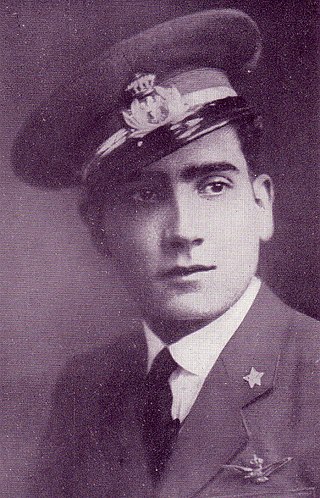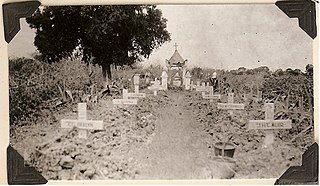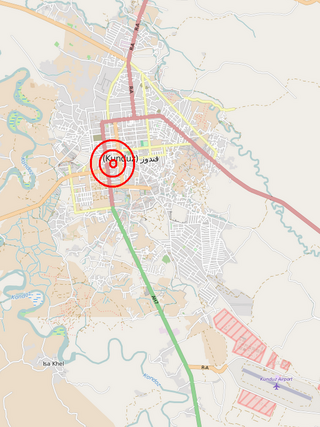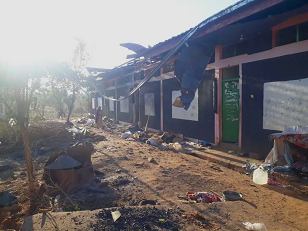
The Second Italo-Ethiopian War, also referred to as the Second Italo-Abyssinian War, was a war of aggression waged by Italy against Ethiopia, which lasted from October 1935 to May 1936. In Ethiopia it is often referred to simply as the Italian Invasion, and in Italy as the Ethiopian War. It is seen as an example of the expansionist policy that characterized the Axis powers and the ineffectiveness of the League of Nations and Italy's Military before the outbreak of the Second World War.

Marcel Junod was a Swiss medical doctor and one of the most accomplished field delegates in the history of the International Committee of the Red Cross (ICRC). After medical school and a short position as a surgeon in Mulhouse, France, he became an ICRC delegate and was deployed in Ethiopia during the Second Italo-Abyssinian War, in Spain during the Spanish Civil War, and in Europe as well as in Japan during World War II. In 1947, he wrote a book with the title Warrior without Weapons about his experiences. After the war, he worked for the United Nations Children's Fund (UNICEF) as chief representative in China, and settled back in Europe in 1950. He founded the anaesthesiology department of the Cantonal Hospital in Geneva and became the first professor in this discipline at the University of Geneva. In 1952, he was appointed a member of the ICRC and, after many more missions for this institution, was Vice-President from 1959 until his death in 1961.

George Lowther Steer was a South African-born British journalist, author and war correspondent who reported on wars preceding World War II, especially the Second Italo-Abyssinian War and the Spanish Civil War. During those wars he was employed by The Times, and his eye-witness reports did much to alert western nations of war crimes committed by the Italians in Ethiopia and by the Germans in Spain, although little was done to prevent them by the League of Nations, and his 1937 exclusive on the bombing of Guernica inspired Pablo Picasso to paint his anti-war masterpiece, Guernica. He returned to Ethiopia after the world war started and helped the campaign defeat the Italians and restore Hailie Selassie to the throne.
Negele Borana is a town and separate woreda in southern Ethiopia. Located on the road connecting Addis Ababa to Moyale, it is the capital of the newly-established East Borana Zone of the Oromia Region. Negelle Borana is the largest city traditionally inhabited by the Borana Oromo. It has a latitude and longitude of 5°20′N39°35′E with an altitude of about 1,475 meters above sea level. It is surrounded by Liben woreda.
Dolo is a border town in southeastern Ethiopia, within 30 kilometers of the Ethiopia-Somalia border. Located in the Liben Zone of the Somali Region, this town has a latitude and longitude of 04°10′N42°04′E. The Mena River flows to the northeast.

The 30th Infantry Division "Sabauda" was an infantry division of the Royal Italian Army during World War II. The Sabauda was based in Cagliari in Sardinia and named for the Latin name of the Royal House of Savoy. After the announcement of the Armistice of Cassibile on 8 September 1943 the division joined the Italian Co-belligerent Army.

The Army of the Ethiopian Empire was the principal land warfare force of the Ethiopian Empire and had naval and air force branches in the 20th century. The organization existed in multiple forms throughout the history of the Ethiopian Empire from its foundation in 1270 by Emperor Yekuno Amlak, to the overthrow of the monarchy and Emperor Haile Selassie in 1974 by members of the Ethiopian army. Due to the country's position along multiple trade routes and its maintenance of independence against multiple Islamic and colonialist invasions lead to multiple conflicts against numerous major countries including the Ottomans, Egyptians, British, and Italians.

The Battle of Ganale Doria took place in 1936 during the Second Italo-Abyssinian War. It was fought on the "southern front". The battle consisted largely of air attacks by the Italian Royal Air Force, under the command of General Rodolfo Graziani, against an advancing and then withdrawing Ethiopian army under Ras Desta Damtu. The battle was primarily fought in the area along the Genale Doria River valley between Dolo and Negele Boran.
The Battle of the Ogaden was fought in 1936 in the southern front of the Second Italo-Abyssinian War. The battle consisted of attacks by the Italian forces of General Rodolfo Graziani, the commander-in-chief of the forces on the "southern front", against Ethiopian defensive positions commanded by Ras Nasibu Emmanual. The strong defensive positions were designed by Wehib Pasha and known as the "Hindenburg Wall". The battle was primarily fought to the south of Harar and Jijiga.

The Somali civil war (2009–present) is the ongoing phase of the Somali civil war which is concentrated in southern and central Somalia. It began in late January 2009 with the present conflict mainly between the forces of the Federal Government of Somalia assisted by African Union peacekeeping troops and al-Shabaab militants who pledged alliegence to al-Qaeda during 2012.

Tito Minniti was an Italian pilot who was killed during the Second Italo-Abyssinian War in 1935 near Degehabur. It is unknown whether he died in combat or after being captured by Ethiopian forces. His death and alleged torture became an atrocity story proffered by the Italian government to justify their use of mustard gas against Ethiopian civilians. Minniti was posthumously decorated with the Italian Gold Medal of Valour.

Italian Ethiopia, also known as the Italian Empire of Ethiopia, was the territory of the Ethiopian Empire which was occupied by Italy for approximately five years. Italian Ethiopia was not an administrative entity, but the formal name of the former territory of the Ethiopian Empire which now constituted the Governorates of Amhara, Harar, Galla-Sidamo, and Scioa after the establishment of Italian East Africa.

The Gondrand massacre was a 1936 Ethiopian attack on Italian workers of the Gondrand company. It was publicized by Fascist Italy in an attempt to justify its ongoing conquest of Ethiopia.

The Italian Somali Divisions were two divisions of colonial soldiers from Italian Somaliland that were formed as part of the Regio Esercito Royal Corps of Colonial Troops during the Second World War. In the Royal Corps of Colonial Troops, the units comprised the "101 Divisione Somala" and "102 Divisione Somala" and fought during the East African Campaign in 1941 before disbanding.
The following events occurred in December 1935:
The following events occurred in March 1936:

On 3 October 2015, a United States Air Force AC-130U gunship attacked the Kunduz Trauma Centre operated by Médecins Sans Frontières in the city of Kunduz, in the province of the same name in northern Afghanistan. 42 people were killed and over 30 were injured. Médecins Sans Frontières condemned the incident, calling it a deliberate breach of international humanitarian law and a war crime. It further stated that all warring parties had been notified about the hospital and its operations well in advance.
The attack on the United States embassy in Addis Ababa was an assault against the chancery of the embassy of the United States to the Ethiopian Empire by shiftas. It occurred in early May 1936 following the collapse of the Ethiopian government and the departure of Emperor Haile Selassie from the city prior to the Italian conquest of Addis Ababa. The attack forced the temporary abandonment of the compound and the evacuation of its personnel by the British Army.

Mario Bernasconi was an Italian Air Force general during World War II. He commanded the Reparto Speciale Alta Velocità during the interwar period, the Aviazione Legionaria during the Spanish Civil War, and the 5th Air Fleet in North Africa during World War II.

In the late hours of 7 January 2022, the Ethiopian Air Force (ETAF) carried out an airstrike on a camp for internally displaced persons (IDP) set up in Dedebit Elementary School, located in the Tigray Region of Ethiopia. Between 56 and 59 people were killed in the attack, and at least 30 others were left injured.














